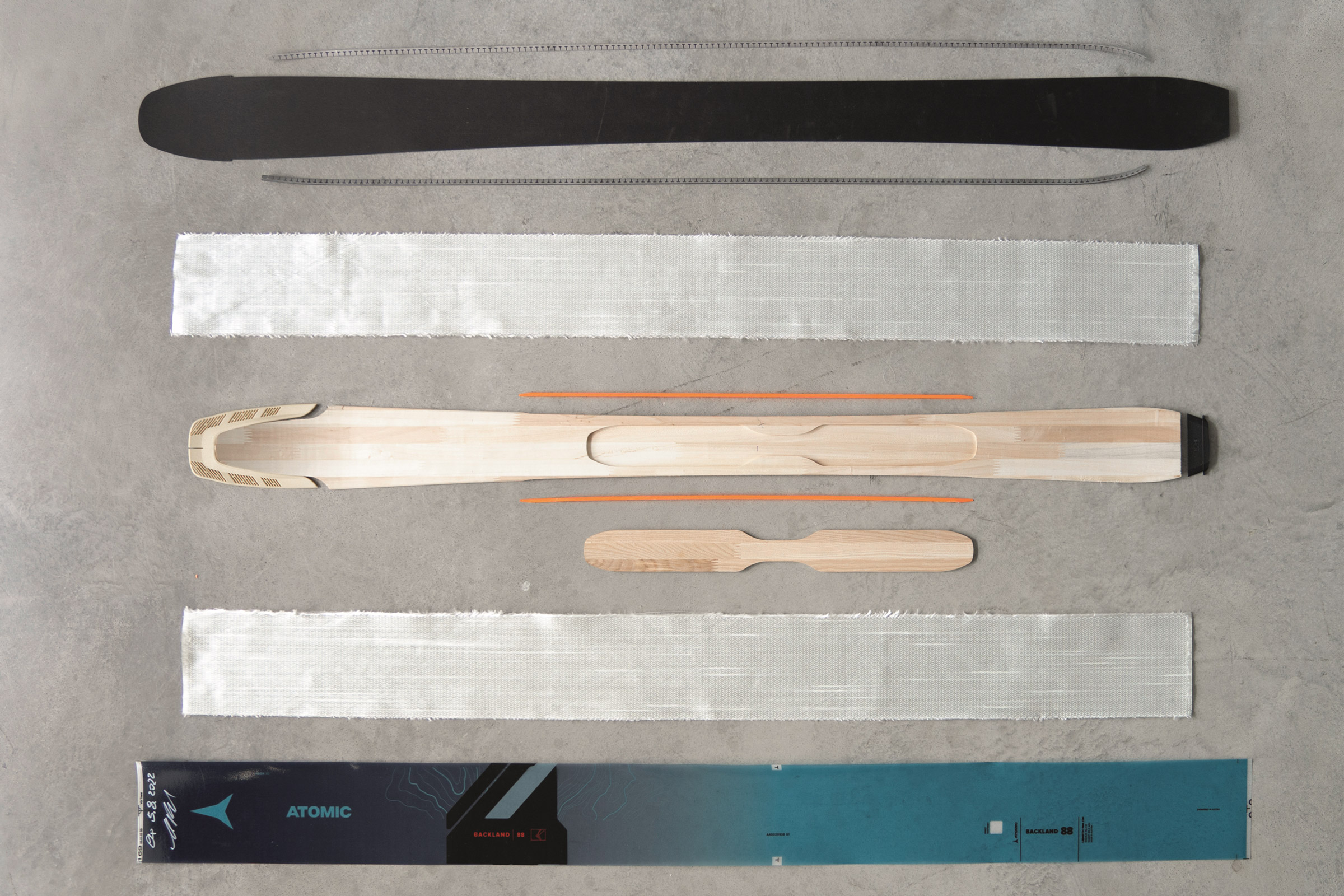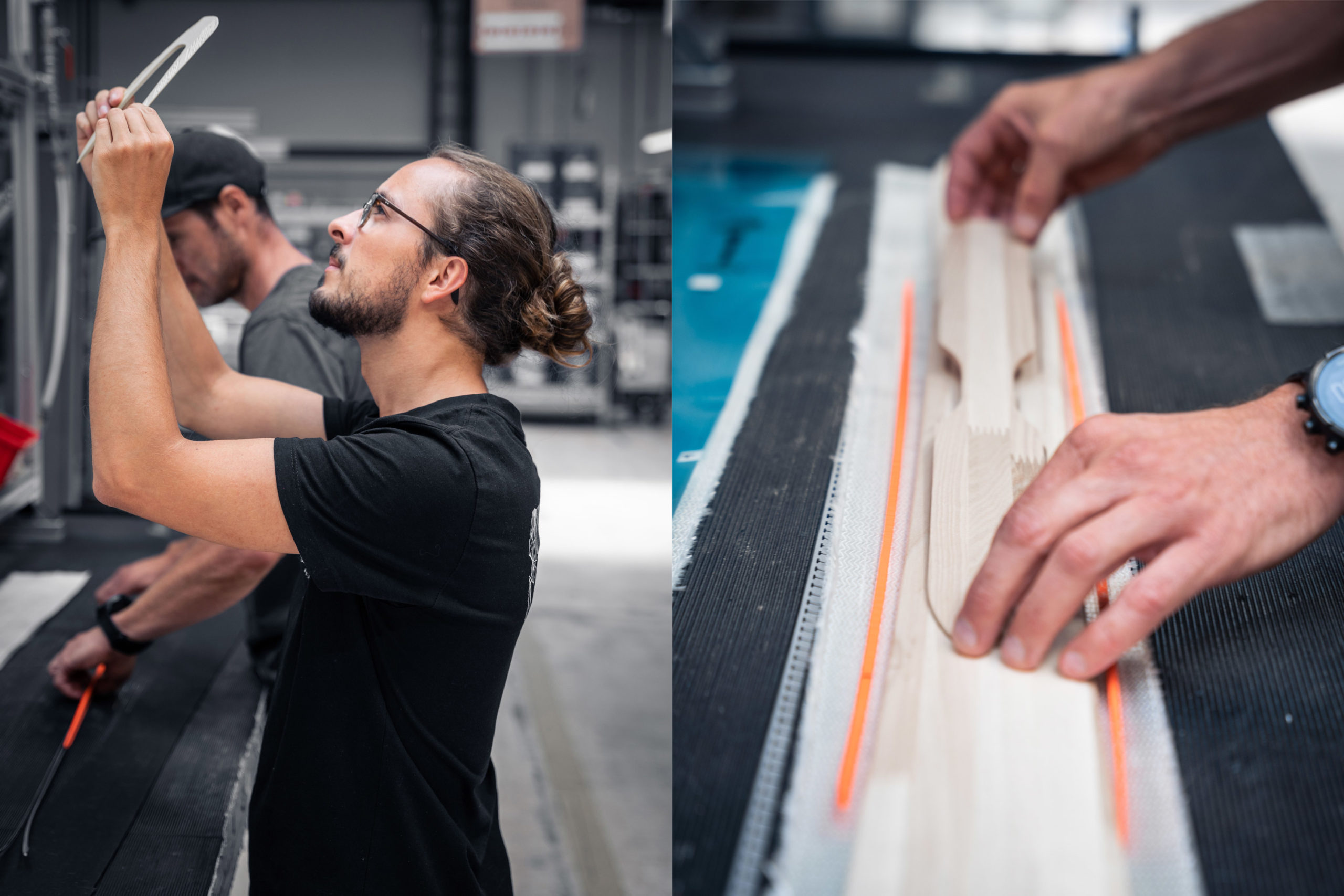The largest ski company in the world just committed to redesigning its global product line in a quest for carbon neutrality. Atomic sells ski gear in 49 countries, distributes over a million pairs of skis and half a million pairs of alpine boots annually, and produces Nordic skis and boots, poles, goggles, clothing, and more.
The company published its first annual impact report last month and announced that it’s charting the carbon impact of every product it makes moving forward with the goal of reducing the company’s carbon impact to net zero by 2050.
That seems like a lot of work, and 2050 seems a long time away. But Atomic is taking a scientific approach adhering to Science Based Target Initiatives (SBTI’s) “clearly-defined pathway for companies and financial institutions to reduce greenhouse gas emissions” in line with Paris Agreement goals that strive to keep global warming below 1.5 degrees Celsius above pre-industrial levels. Global warming is currently at 1.3 degrees C.
To understand where the carbon savings lie, Atomic is measuring, reporting, and getting its work double-checked by a third-party certifier to ensure they’re on point. They’ve also committed to sharing their carbon-reducing tech and carbon-measuring tools they’ve developed with other brands to increase their impact. And they’re doing it without buying controversial carbon offsets.
Plenty of companies are dabbling in sustainability. But in most cases, they’re either small-scale, the limited scope of their commitment isn’t enough to move the needle forward, or they don’t have numbers to back up their claims.
Atomic’s plan has been in development for a while. However, the release of their first annual sustainability report this winter is poignant timing. While the Rockies, Japan, and California are buried in white fluff, two weeks ago, Europe’s ski slopes were grass, and at home in Vermont, conditions were equally abysmal.
Winters like this make climate change personal. So when I heard that Atomic is fully investing in carbon neutrality, I wanted to learn more.
Atomic’s 2023 Environmental Impact Statement

Performance Enhancing Changes
The company is putting its money where its mouth is. It hired a full-time sustainability manager, Ronnie Schwartzenbrunner, who is tasked with completing life cycle assessments (LCAs) on all Atomic products. He’s helping the company ensure every component in every product serves a performance-driven purpose with the least possible carbon cost. He’s developed a tool that lets product designers get a read on any new product’s carbon impact while the design is still in the concept phase. Designers can use the tool to get a ballpark carbon impact of any material they spec for any part of a ski, boot, helmet, or goggle, with the option to swap materials to see carbon impact. And the company is looking for potential carbon savings in every aspect of its business.
Curing carbon isn’t a new initiative for Atomic. It has pursued major carbon-cutting initiatives since 1992 but without the tools to know the impact of its actions and without a coordinated company-wide approach, which is what it has now. In 1992 Atomic switched from lacquer to anodizing in skis, and from paint to anodizing in boots, and poles, which undoubtedly saved carbon, but no one knows precisely how much. That was part of the “Atomic For Nature’ initiative that invested the equivalent of €17 million in environmentally-friendly production processes over the following two years.
In 2005, the brand switched from oil heat to local wood chip heat. Now, the 6.39 GWh/year Atomic uses in its Altenmarkt headquarters comes from renewable sources. By using local wood chips instead of oil to heat its ski presses, Atomic reduced their impact by 95% and kept 2,175,789 tons of carbon dioxide out of the atmosphere each year.
In 2013, Atomic installed a Heat Recovery System in its ski presses, which it followed up in 2014 by converting to 100% renewable energy. In 2020 all lightbulbs in Atomic’s Altenmarkt factory were converted to LEDs, saving 5% electricity usage. In 2021, Atomic started recycling sawdust, saving 18.9 tons of carbon dioxide each year — an 84% reduction compared with wood composting.
In 2022, Atomic did its first LCAs for alpine skis, touring skis, boots, and Nordic skis. And in 2023, the brand will install an Environmental Management System (EMS) to help improve environmental performance and reduce Atomic’s environmental footprint. Until 2022, efforts were, in some cases, effective but uncoordinated and without clear impact studies.
It took Atomic two and a half years to hire a sustainability manager, develop its LCA protocol, partner with third-party certifiers, get factories and designers on board, and complete the LCA for the Backland 85 ski, which was 300 pages. Future ski LCAs should be considerably faster, around three months, though LCAs in new categories could take longer to complete.
Each LCA calculates not just the product’s carbon impact but 16 other impacts that Atomic needs to keep in check as it develops and uses low-carbon-dioxide materials. A material isn’t viable if it cuts carbon but increases toxicity, for example. Atomic’s goal is to complete LCAs of every product it makes, which it admits may not be possible.
Walking the Talk

The awesomeness of Atomic’s announcement came alive for me when I got on the redesigned Backland 85 downhill ski. The old version used Asian carnauba in its core. The new 85 uses poplar, which comes from Europe near Atomic’s factories, saving fossil fuels for transport. The original ski used three layers of fiberglass and resin. The new version has two layers of fiberglass, two-thirds the resin, and a slightly thicker profile that gives the skis more stability and power transmission. A 4mm ash inlay replaced a 1mm Titanal binding plate. The updated ski is slightly heavier, but the new construction makes the ski more durable, and gear that lasts longer is better for skiers and the planet.
When I loaded the ski in a turn, the ash flexed in a rounder profile to give me a shockingly good edge hold descending an icy luge run from an Austrian mountain hut.
The new ski uses more recycled material in the top sheet, 25% recycled steel edges, and partially recycled sidewalls. Plus, Atomic devised a better way to cut sidewalls to reduce waste.
All those changes cut the ski’s carbon impact by 30% from 13.16kg carbon dioxide equivalent per unit to 9.16kg carbon dioxide equivalent per unit. The changes also give the ski better on-snow performance and more versatility.
“A reduction in carbon dioxide doesn’t mean a drop in quality,” said Herbert “Herbie” Buchsteiner, who has been with Atomic for 26 years and heads the ski and binding categories for the brand. “We are going for great design, superb performance, and the least possible impact.”
Atomic is sharing concrete numbers around the impact product redesigns are having. It’s charting benchmarks, baselines, and measurements versus making vague statements about eco-friendliness. Establishing baselines illustrates the commitment to being in this for the long haul and hopes it also mutes any accusations of greenwashing.
A Snowflake Saved Is a Snowflake Earned

Based on the Backland, Atomic’s strategy seems like a lot of work for modest carbon savings, but it’s using science, not magic, and taking calculated, verified baby steps instead of giant bounding leaps toward the goal.
Redesigning skis is sexy, but Atomic also knows that the impact of Atomic employees commuting to work equals the carbon impact of 35,000-70,000 pairs of skis. It needs to control both to inspire other companies and customers. It’s also ramping up to change how it heats and powers other factories. Switching to biomass at the Romani and Bulgaria factories could have significant savings, according to Schwartzenbrunner. Atomic’s goal is to use 100% renewable energy across all its owned facilities by 2025.

Next on the hit list are reducing business travel, getting employees to carpool, and coming up with carbon-saving solutions like bio-resins, sidewalls without waste, and recycled or zero-impact material for ski bases that slides just as well as the ones Atomic uses now.
Friends With Benefits

Regardless of how big Atomic is, a single ski brand can’t halt global warming. But it can rally the industry to change and inspire skiers like you and me to use our purchases, and ultimately our votes, to make a change. That’s Atomic’s goal. It’s coaching its athletes and ambassadors on walking the talk and hosting an Industry Climate Summit for snowsports brands this fall to foster collaboration in the name of saving snow. Sharing technology, recycling collaboration, material innovation, and adopting standards/certifications so consumers can compare the impact of their purchases are all on the agenda. Hopefully, brands like Tecnica, which has a fledgling ski boot recycling program in Europe, Rossignol, which has just released its eco Essential Ski, and DPS, a small brand with a robust sustainability program, will attend and share.
“We want to be open about what we’ve done,” said James Fairbank, Atomic Global Head of Marketing. “The point of making the report public is to inspire others to take action too,” Fairbank says the brand is also learning from other brands and businesses.

Skiing impacts more than skiers. In Austria, where Atomic is based, and in Vermont, where I live, and everywhere else people ski, tourism provides income, culture, and landscape. If it goes away or becomes unviable financially because the season is short, the impacts will be shocking.
It’s also a little bit shocking how complete the buy-in is for this project. Climate change can feel like a problem someone else needs to deal with. At Atomic, employees are engaged. Walking around Atomic’s Altenmarkt facility, I spoke with a dozen Atomic employees, from factory workers to the company’s General Manager, and the energy was palpable. Everyone at Atomic is intimately involved and invested in succeeding.
Does 2050 seem like an impossibly long time away? To me, it does. But by taking a measured, documented, vetted approach, Atomic is on track to meet a specific, science-based goal that considers the company’s entire carbon dioxide generation. They’re methodically responding to global warming with every tool they have.
“The impact any single manufacturer can have is marginal,” said Fairbank. “But we need to own the ship. We know what we make, and we can control it. The ski industry is the punching bag of the climate crisis. Do the right thing or not. If we don’t, we won’t be having this conversation because we won’t be here.”


